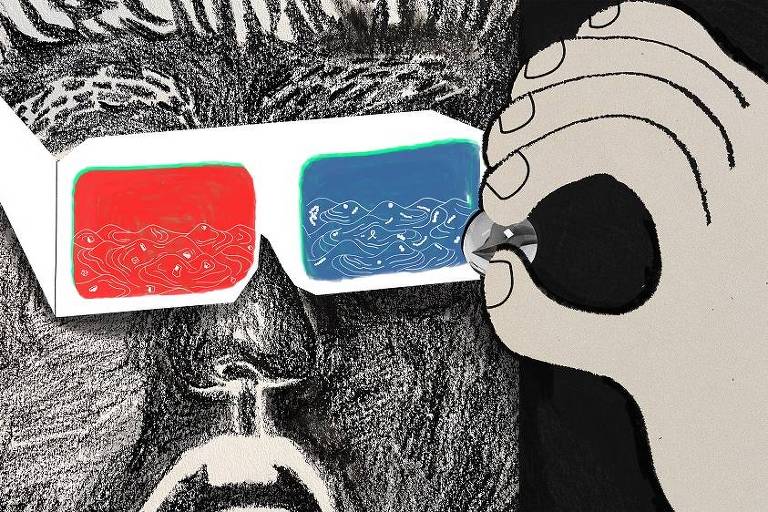The first images of space exploration immortalized the Earth as a blue marble. However, if an extraterrestrial planet approaches it in the distant past, it will not see blue seas covered with white clouds. Our planet is about 4.5 billion years old, and today we know that it has always been in a state of flux, chemical elements are in constant exchange between the biosphere, atmosphere, lithosphere and hydrosphere, and tectonic processes are changing all the time. Your physiognomy.
How will the earth be? Earth’s atmosphere was very different from today’s for nearly half of its life, during the Hadean and Archean eras. Oxygen was practically absent, as evidenced by minerals in sedimentary rocks over 2.5 billion years old that were not stable in the presence of this element.
Our atmosphere today contains about 21% oxygen. Without it, we wouldn’t be here. From where he came?
Fossil and molecular evidence points to a dramatic evolutionary change between 3.5 and 2.5 billion years ago. Simple organisms, cyanobacteria, which use sunlight as an energy source by using carbon dioxide and water as reactants, emerged in a process known as photosynthesis. One of the byproducts of photosynthesis is oxygen from the cracking of carbon dioxide and water molecules: for the first time an important source of oxygen has been created.
One of the first fates of this oxygen was to react with huge amounts of iron and other elements dissolved in seawater. Iron is soluble in hypoxic conditions, so the ancient seas were not blue, but had greenish or reddish hues, due to the high concentration of this mineral. Once the oxygen comes into contact with all this iron, the two elements combine to form iron hydroxides, which are in turn insoluble in water. The result was the deposition of huge amounts of iron, which ended up on the ocean floor and converted into mineral deposits.
The Great Oxygen Event, or GEO, is the name scientists have given to this period when the oceans were “cleansed” of iron and other minerals such as manganese. From that moment on, the atmosphere began to provide small amounts of oxygen – oxygenation at levels similar to those of the present occurred much later, about 500 million years ago.
However, oxygen is a highly reactive element. No wonder we try to consume products and cosmetics with antioxidants, such as wine and acai: we want to avoid aging associated with oxygen free radicals. Rust is nothing more than a process of oxidation of metals, and combustion is nothing but rust at breakneck speed. Most of the simple organisms that existed before the emergence and spread of cyanobacteria probably had no protection against this gas – they lived in hypoxic environments, without oxygen. Geosynchronous orbit may have caused one of the planet’s first mass extinctions, which is why it is sometimes called the “oxygen catastrophe”.
What was the weather like before the appearance of cyanobacteria? Geological evidence points to a planet rich in gases such as carbon dioxide and methane, as well as nitrogen, now the largest component of the atmosphere. In addition to the greenish seas, this formation of the atmosphere probably did not produce white clouds, but orange ones, as on Venus. Earth might see a planet with green seas and orange clouds.
In 1972, astronomers Carl Sagan and George Mullen suggested that at the beginning of the planet’s life, sunlight was about 70% of its current strength. Calculations indicated that during a large part of its history the Earth must have been completely frozen. However, geological records indicate the presence of free water on its surface since its formation practically. If sunlight is much weaker, how does water become liquid?
A plausible explanation for this faint little sun paradox is due to the distinct composition of the atmosphere: both carbon dioxide and methane are greenhouse gases, and their larger amounts in the ancient atmosphere may have ensured that Earth was warm enough to harbor liquid water. beginnings. In these waters, photosynthetic cyanobacteria appeared, which allowed the consumption of most of the carbon dioxide in the atmosphere by increasing O2. And that, upon contact with methane and other reducing gases, forever changed the composition — and the face! – for our planet.
*
Fabricio Caccetto is Professor of Geology and Student of Philosophy at UFMG.
Participation In the Serrapilheira newsletter to keep up with more news from the institute and from the Ciência Fundamental blog.
Current link: Did you like this text? A subscriber can unlock five free accesses to any link per day. Just click the blue F button below.

“Hardcore beer fanatic. Falls down a lot. Professional coffee fan. Music ninja.”



![[VÍDEO] Elton John’s final show in the UK has the crowd moving](https://www.tupi.fm/wp-content/uploads/2023/06/Elton-John-1-690x600.jpg)


More Stories
The Director of Ibict receives the Coordinator of CESU-PI – Brazilian Institute for Information in Science and Technology
A doctor who spreads fake news about breast cancer is registered with the CRM of Minas
The program offers scholarships to women in the field of science and technology